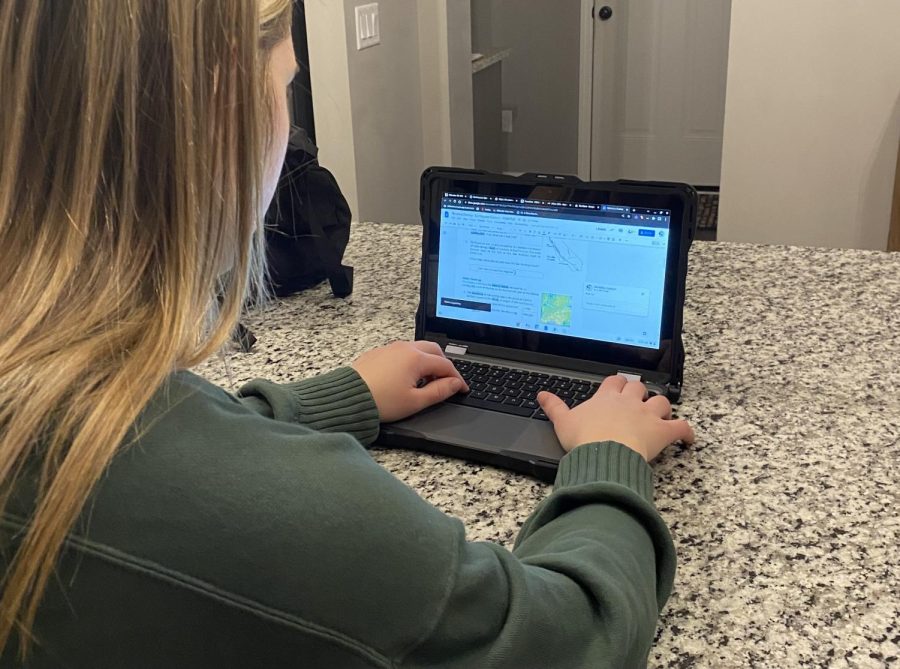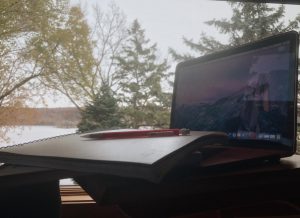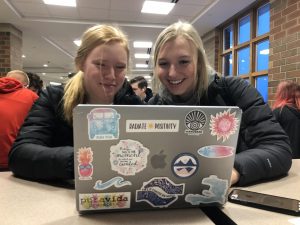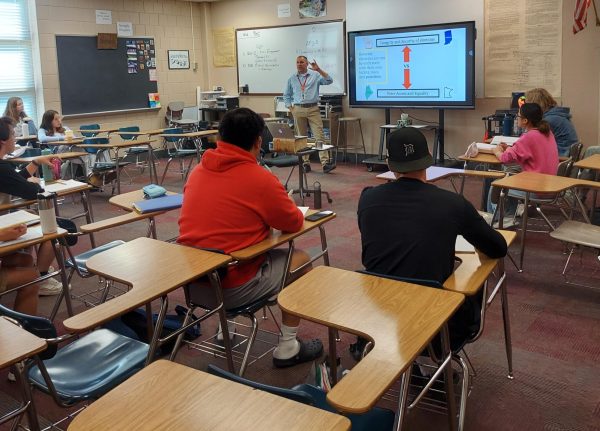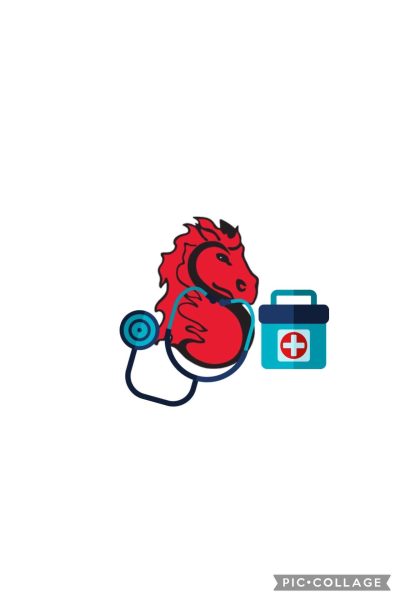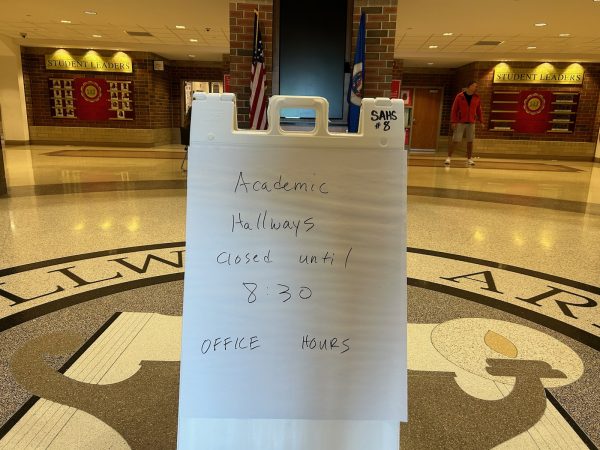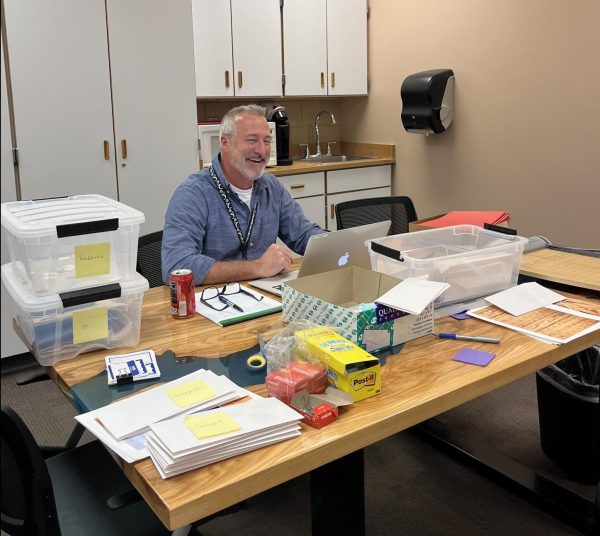New 1:1 technology program helps students access online learning
A middle school student works on her homework on the new Chromebook provided from the school. She is able to do her homework from home and get everything done.
This November, the elementary, middle and high schools received new Chromebooks for each student through the 1:1 technology program. This is due to schools’ quick transition to online learning because of the COVID pandemic.
The 1:1 technology program was funded by the technology levy in 2022. A levy is something voters approved, and it got voted on in a special election.
Principal Robert Bach said that there were specific questions about technology when the voters were voting. This made sure that there was a certain amount of money that was going to be devoted to the technology. Once that got approved, the money went towards the 1:1 devices.
The purpose of the 1:1 technology program is that each student has access to some sort of electronic device. Kindergarten and first-grade students are the only exception and get one iPad per every two kids and these devices are used to support in-class instruction. Second graders through fifth graders received clamshell Chromebooks that will be in-class tools for each student and will only be taken home when needed. Sixth graders through twelfth graders received the two-in-one touchscreen Chromebook that will go back and forth between students’ homes and the school.
“As we move more and more instruction to digital platforms, we have to make sure that kids have access to that. [The 1:1 initiative] is a way of ensuring that all students have access to it,” Bach said.
Online learning has slowly started to evolve ever since 1989 when the University of Pheonix started using one of the first online services. Then the pandemic happened and everything turned to online learning so quickly that students, parents and teachers did not have time to react to the change. The pandemic is one of the main reasons everything has moved online and instead of going back to how it was, schools are pushing forward with more technology-based curricula. The only problem with that is that not all students can afford or access a device to do their online learning when they are not at school.
An article on the Stillwater Area Public Schools website stated, “With our Universal Access (1:1 technology) program, a student can access their learning when they are out ill, on vacation or simply working on a class project on the weekend.”
The new program allows students to have access to a device whenever they need one and they do not need to worry about the cost or availability of the device.
The school has an acceptable use policy. Students acknowledge that they understand the acceptable use policy, which is covered in the fifth-hour class meetings at the beginning of the year. This policy is put in place so students do not misuse or mess around with the new devices.
“We understand and accept that there is going to be a certain amount of wear and tear. So typically, our stance has been if something breaks and it is accidental, we figure out ways to cover that. If it breaks as a result of horseplay or a result of other negligent behaviour then we wind up taking that up with students and families,” Bach said.
Every student having access to a device will likely decrease the number of missing assignments because “now there is no reason not to be able to do your homework as long as it is online,” junior Grace Hendrie said.
“I know a lot of people have issues with access to technology at home and it is hard to get their work done outside of school and some people use it as an excuse to get out of doing the work,” Hendrie added.
The devices will help students stay on track with classes and missing assignments. They will have access to all school websites (e.g., Schoology) from home. This benefits the teachers and the students.
There are many cool things about the new Chromebooks for sixth through twelfth graders. The computers can convert into a laptop, tablet, tent and stand. It has an all-day battery life and an optional touchscreen pen for sketching and taking notes. The school also provided a protective case to make sure that the computers stay as safe as possible when being transferred back and forth.
“I really like how [the Chromebooks] are touch screen,” eighth grader Brynne Laska said.
The touchscreen part of the Chromebook is probably the most popular component of the new computers for students. This allows hands-on learning while still being online.
Some students already have personal computers that they bring from home and do not need the computers that are being supplied.
Hendrie said that the new technology “only benefits people who need the computers. Having everyone take a computer is kind of a waste of resources because people are going to take them and never touch them.”
There is a good amount of people who already have computers, but “I feel like most kids will use them,” Laska said.
Some students might have their personal computers, but they might be old and slow, or they might be broken. The new computers might just be more appealing to students too rather than their personal computers. The computers are getting the most use from students who desperately need them, though. The new Chromebooks are necessary for a successful online learning environment.
Students get to keep the computers for the duration of their high school years. Students will never have to worry about having access to computers or online work again thanks to the technology levy and the 1:1 initiative.

Hi, my name is Grace. I am on the Photography and Copy Editing teams. I am on the girls' high school hockey team, the girls' high school lacrosse team,...


